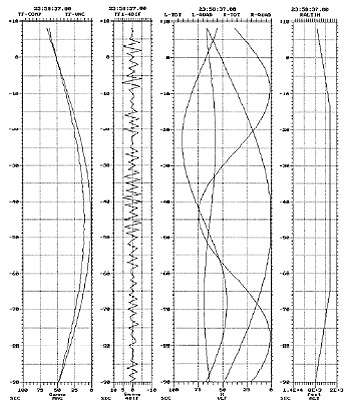RMS Instruments
6877-1 Goreway Drive
Mississauga, Ontario
Canada L4V 1L9
Tel: (905) 677-5533
Fax: (905) 677-5030
Web: www.rmsinst.com
E-mail: rms@rmsist.com
DISP300 is a program that graphically displays data from RMS INSTRUMENTS’ GP300 family of graphic printer/chart recorders in real-time. The program runs on a conventional PC and creates a display that resembles the output of a chart recorder vertical traces on a chart.
DISP300 complements the functions of traditional recording on chart paper, offering (a) an alternative means to monitor in real-time the same signals being recorded on paper, and (b) the primary monitoring device in applications where paper recording is only "on demand".
FEATURES:
- Displays up to 16 traces at a time
- Allows zooming on any given trace
- Independent trace scrolling for each chart
- Optional data logging to a disk file
- May operate with chart 'on' or 'off'
- Displays time stamp, time axis on each chart
- Full control of size, position, label, span and zero position of charts
- Assign recorder channels to traces in any order
- Allows for keyboard or mouse control
- Screen snapshot may be sent to a file or printer

DISP300 draws traces in different colors, with matching labels. Several charts, each with itsown gain and zero point, may be displayed on one screen. Up to four screens can be defined in a single configuration.In a typical application with the GP300 integrated as part of a data acquisition system, DISP300 allows for all the information sent to the GP300 to be available for real-time viewing on the computer's screen. A standard RS232 cable connects the output serial port in the GP300, to one of the COM ports in the PC. The configuration of DISP300 is fully programmable.
For example, in a geophysical data acquisition environment, one may define a configuration with a screen consisting of four charts (figure at right): (a) MAG traces, (b) fourth difference of MAG, (c) VLF, and (d) radio altimeter. The remaining three screens could be configured with additional information, or with a different arrangement of the same traces. The operator may readily switch screens with a couple of keystrokes, or using the mouse.
Minimum Requirements:
IBM-compatible computer with 386, VGA, 512 Kbytes of free DOS memory, and a serial port.
MS-DOS 5.0. | 
